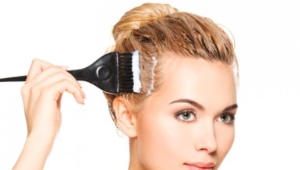Henna drawings on the shoulder
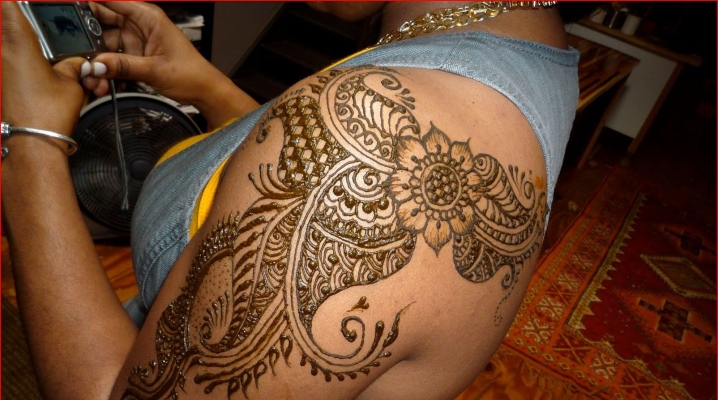
Each person wants, one way or another, to stand out from the crowd, to emphasize their individuality and uniqueness. Someone focuses on catchy accessories, someone - on an unusual hairstyle or makeup. Recently, it has become very fashionable to decorate your body with various tattoos. However, not everyone wants to apply a permanent drawing, fearing that he will get bored or become irrelevant. In this case, a temporary tattoo made with henna can come to the rescue.
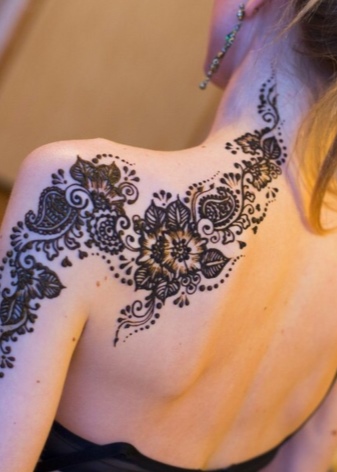

The history of henna drawing
Henna drawing on the body, or, as it is also called, mehendi, appeared in ancient Egypt and was very common among the nobility. Ancient Egyptian beauties decorated their bodies with such patterns, emphasizing their status and high social position. Later this tradition spread to other eastern countries. In India, for example, mehendi has a special place: there, every ritual or holiday is accompanied by the application of such drawings to certain parts of the body.
Currently, a temporary henna tattoo is not the prerogative of only the inhabitants of the East. Fashion dictates its own rules and now all over the world this art form is gaining momentum. Men's, women's and even children's bodies are increasingly decorated with mehendi patterns.They are most often seen on the shoulder, forearm, face, neck, and legs.


Choosing henna
It is very important to first determine the type of henna that will act as a paint. There are two varieties of this henna:
- Natural. It is extracted from the leaves of a tree called cinchona, or cinchona. The color of this paint is brown. It is sold in powder or paste form. When buying henna, be sure to look at the date of manufacture of the product - the most saturated shade is obtained in the first three months. When purchasing henna in a pasty state, pay attention to the consistency - it should be soft;
- Colored. It is obtained by mixing natural henna and artificial dyes. With its help, you can make patterns of absolutely any color. However, do not forget about the possibility of an allergy to an artificial component.

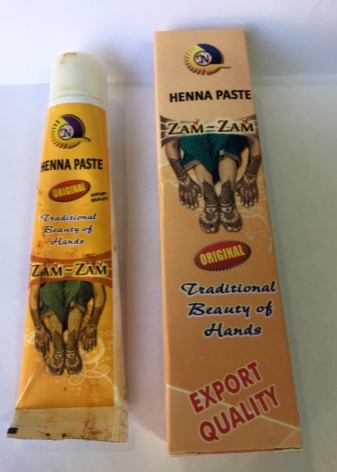
Benefits of Henna Drawing
Undoubtedly, temporary patterns on the body have a lot of advantages over real tattoos. Human preferences and hobbies are changeable and what seemed beautiful yesterday can poison the existence of tomorrow. Mehendi in this regard is an ideal option:
- Its application is absolutely atraumatic and painless;
- The paint does not penetrate into the deep layers of the skin, remaining on the surface; expensive procedures are not required to remove it;
- Unlike a real tattoo, mehendi stays on the skin for up to 4 weeks with proper care. It is removed from the skin without residue and consequences.

Patterns for decorating the shoulder
Most often, modern women of fashion and fashionistas choose the shoulder to perform a temporary tattoo. There are several reasons for this:
- Absolutely any pattern will look beautiful on the shoulder;
- In this place, the hand is quite voluminous, it is possible to create a drawing with a 3D effect;
- The pattern can be extended to the forearm or even capture the area of the back, chest or neck;
- Skin regeneration in the shoulder area occurs at a slower pace, so the mehendi will delight you for as long as possible;
- The pattern made in this place will definitely not go unnoticed, however, if desired, it is easy to hide it with a sleeve.
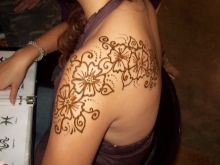


Symbolically, the drawing on the left hand of the girls contributes to harmonious relations in the family, on the right hand it helps to gain wealth and good luck in business.
There are some patterns that can be used as talismans:
- Peacock. Symbol of well-being, success, bright, beautiful life;
- Lotus. It symbolizes the feminine, knowledge in the field of the spiritual sphere, pure thoughts;
- Ganesha. Helper God. Gives success to its wearer, removes obstacles, improves intuition;
- Fish. He speaks of the passionate nature and unbridledness of his owner;
- Climbing plant. Protects from negative external influences, helps to find and keep love;
- Floral pattern. Symbolizes prosperity, the choice of a new life path;
- Broken lines. Provide assistance in career growth and contribute to making the right wise decisions;
- Swan. Helps to fulfill desires;
- Shell. It will save you from troubles, give you good luck in business;
- Sun. Symbolizes eternal life, self-knowledge.
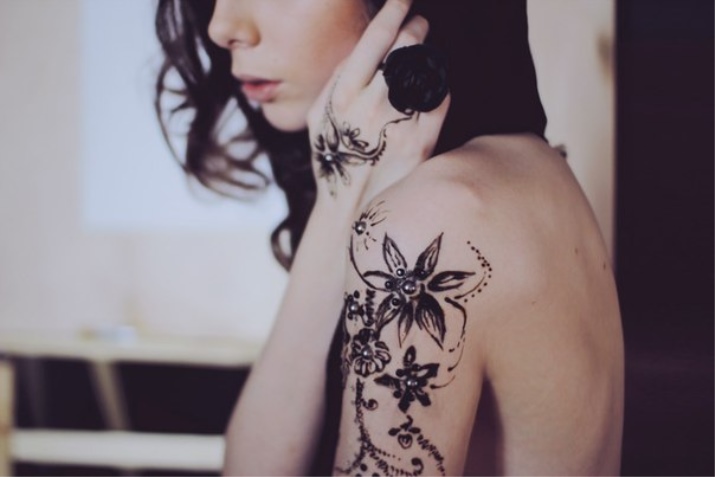

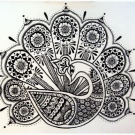
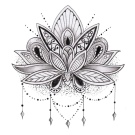
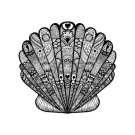

Making a pattern at home
If you have artistic talent and a sense of taste, you can easily make mehendi yourself without leaving your home. To get started, practice on paper, drawing easy patterns for beginners; then move on to the more difficult ones. Ideas for drawings can be found on the Internet.
So, we will tell you how to draw a mehendi ornament in stages:
- Get a special henna paste - it does not require any other preparation, unlike henna powder, it will be easier for you to draw with it;
- Prepare a wooden stick for drawing a pattern, a felt-tip pen or a cosmetic pencil for sketching on the skin. If desired, you can use a ready-made stencil;
- Thoroughly clean the skin, wipe it with an alcohol solution and lubricate with eucalyptus oil - this will help the paint penetrate into the deeper layers of the dermis;
- Next, draw the pattern you like with a pencil or felt-tip pen. If you are using a ready-made stencil, fix it on the skin with a plaster;
- Apply a thin layer of henna along the contours of the sketch, squeezing it out of a cone-shaped tube or with a stick. If suddenly the paint smears or you squeeze out the excess, gently remove it with a cotton swab;
- The finished pattern must be thoroughly dried. Cover it with cling film or go out into the open sun. The longer the drying takes place, the better the paint will be absorbed into the skin. Drying time - from 1 to 12 hours;
- When the drawing dries, wipe off the henna with a cotton swab;
- Gently wipe the resulting pattern with lemon juice, almond or eucalyptus oil;
- Avoid contact with water for at least 4-5 hours.
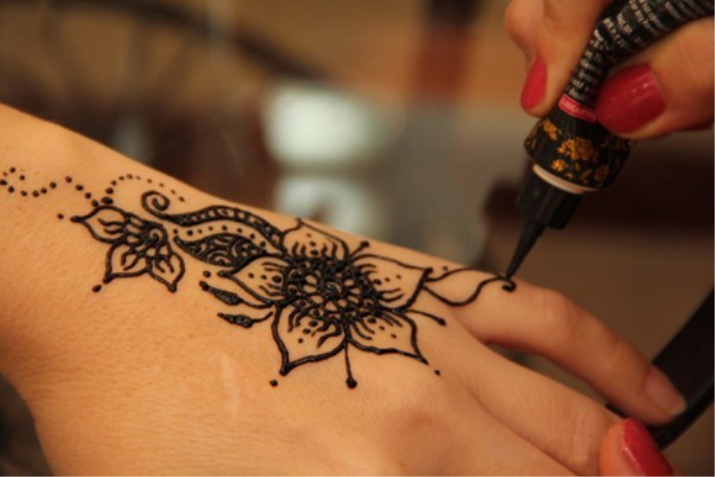
Care
To enjoy the resulting ornament as long as possible, you need to properly care for it:
- Lubricate it daily with olive, almond or eucalyptus oil;
- Avoid scrubbing the decorated area of the body;
- You should not wash with too hot water, it is also better to refrain from going to the bathhouse, sauna, swimming pool;
- Try to minimize contact with clothing.



You will learn more about how to create a beautiful pattern on the shoulder in the following video.






















